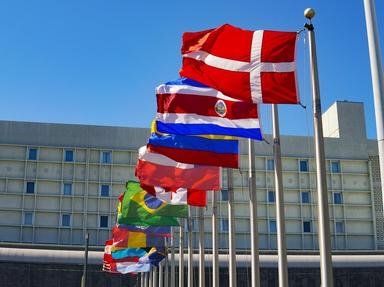
Canadian Provincial and Territorial Flags Quiz
Canada has 10 provinces and 3 territories, each of which has their own flag. Do you know them all? Please note - the flags are not placed in the image to represent geographical, nor alphabetical ordering. Have fun!
A label quiz
by reedy.
Estimated time: 3 mins.
